Indian Ocean Tsunami Memorial by Carmody Groarke
British architects Carmody Groarke have completed this granite monolith outside London's Natural History Museum to commemorate victims of the 2004 Indian Ocean Tsunami.
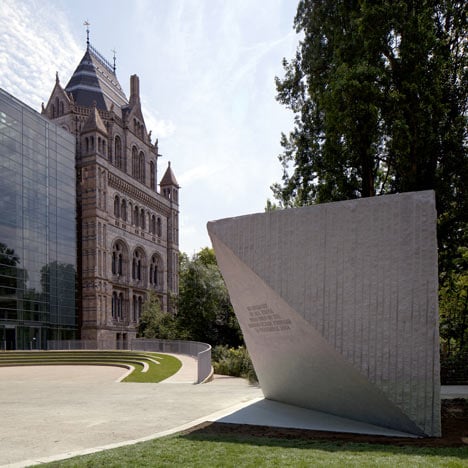
The 115-tonne stone retains the ridged marks created when it was quarried in France.
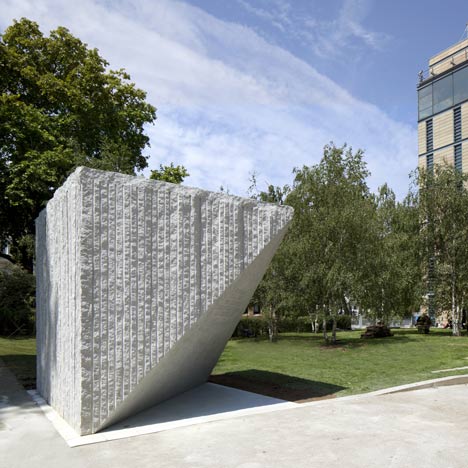
A diagonal slice undercutting one corner reveals a polished triangular face with an embossed dedication.
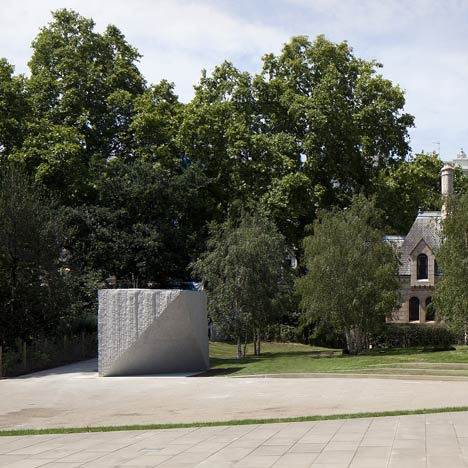
Carmody Groarke and project managers M3 evolved the design through dialogue with survivors and bereaved families.
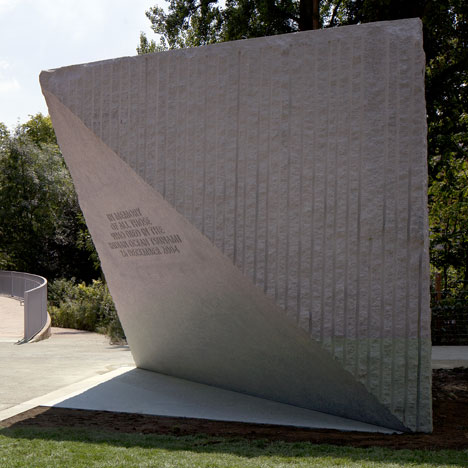
Carmody Groarke also designed a memorial to victims of the 7 July London terrorist bombings, which opened in Hyde Park, London, in 2009.
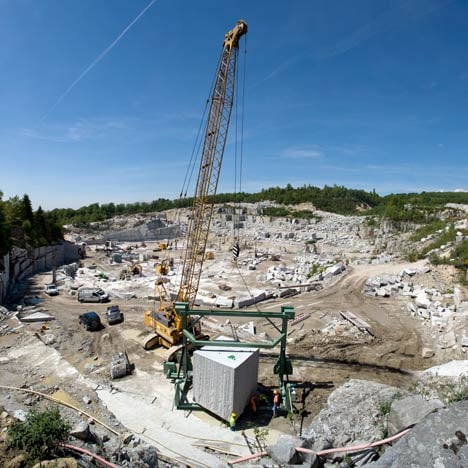
More projects by Carmody Groarke on Dezeen »
More stories about memorials on Dezeen »
Photography is by Luke Hayes.
Here are some more details from the Memorial Project Board:
Memorial to victims of Indian Ocean Tsunami opens
A memorial to the victims of the 2004 Indian Ocean Tsunami opens today in the grounds of the Darwin Centre at the Natural History Museum in London in a ceremony attended by His Royal Highness, The Prince of Wales and Her Royal Highness, The Duchess of Cornwall.
The Memorial is the culmination of years of work by Tsunami Support UK (TSUK) and was made possible thanks to a £550,000 grant from the Department for Culture, Media and Sport (DCMS).
A single granite monolith, the design reflects the views and feelings of UK survivors and bereaved families. It is the product of months of dialogue between them and the design team of Carmody Groarke and M3 Consulting.
Michael Holland, Chairman of the Memorial Project Board, said: “The 2004 Indian Ocean Tsunami was one of the worst natural disasters in living memory, hundreds of thousands of people lost their lives. The impact of the devastation was felt across the world. This huge, singular geographical fragment will create a powerful reminder for generations to come of this momentous event within the Earth’s natural history. Its purpose is to stop people forgetting. Within this new public space, the Memorial also offers a place for more quiet contemplation.
“We are immensely grateful to the DCMS for funding the memorial and to the Natural History Museum for making space available in its grounds – we can think of no better place to remember the lives of the UK family members and the over 225,000 others who perished in the Tsunami.”
Kevin Carmody and Andy Groarke of Carmody Groarke said: “It has been a huge privilege to work with the survivors and bereaved families to design a permanent memorial in such a significant public space. Our collective intention is to make a fitting, engaging and unique Memorial - a place for contemplation and remembering for generations to come. Our goal was also to give the Memorial stone a strong architectural relationship between the bold buildings and landscape of the Natural History Museum.”
Dr Michael Dixon, Director of the Natural History Museum, said: “It is fitting that the Natural History Museum is home to this impressive new Memorial. An important part of our mission is to make sense of the natural world and I hope this Memorial will not only bring comfort to those who lost loved ones in the Tsunami but also be a reminder to us all of the powerful and sometimes destructive force of nature.”